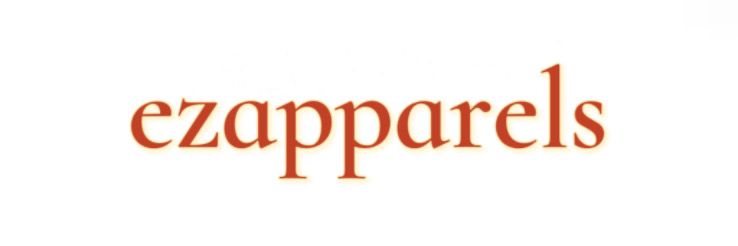Key Considerations When Choosing Heat Proof Fabrics
Mar. 14, 2025
Key Considerations When Choosing Heat Proof Fabrics
Selecting the right heat proof fabric is crucial for various applications, from industrial workwear to home textiles. These specialized materials play a significant role in protecting users from extreme temperatures, preventing burns, and ensuring safety in hazardous environments. Here are some key considerations to keep in mind when choosing heat proof fabrics.
Contact us to discuss your requirements of heat proof fabric. Our experienced sales team can help you identify the options that best suit your needs.
Understanding Heat Resistance Levels
Different heat proof fabrics offer varying levels of heat resistance. Understanding these levels will help you select a material suitable for your specific needs.
- Low Heat Resistance: Suitable for environments where temperatures do not exceed 100°C, such as light kitchen work.
- Medium Heat Resistance: These fabrics can withstand temperatures up to 300°C, ideal for industrial settings like welding and metal work.
- High Heat Resistance: Designed for extreme conditions, capable of withstanding temperatures above 500°C. These are essential in firefighting gear and heavy industrial applications.
Fabric Composition Matters
The composition of the heat proof fabric significantly influences its performance. Here are some common materials and their properties:
- Aramid Fiber (e.g., Kevlar): Known for its high tensile strength and heat resistance, making it suitable for protective clothing.
- Nomex: A flame-resistant fabric ideal for firefighting suits and race car drivers’ apparel due to its ability to withstand continuous exposure to high temperatures.
- Carbon Fiber: Excellent for both heat and thermal insulation, used in advanced industrial applications.
- Fiberglass: Often used in protective gear and insulation materials due to its heat resistant properties.
Practical Suggestion:
Always check the manufacturer's specifications for the fabric's heat resistance ratings, and opt for a blend if you need additional durability or flexibility.
Durability and Longevity
Choosing a heat proof fabric also requires an assessment of durability. The lifespan of the fabric can depend on various factors, such as:
- Frequency of Use: Fabrics subjected to high usage may wear out faster.
- Exposure Conditions: Continuous exposure to extreme environments can degrade some materials quicker than others.
- Maintenance: Proper washing and care will significantly impact fabric longevity.
Tips for Maintenance:
- Follow washing instructions precisely to maintain fabric integrity.
- Store heat proof fabrics away from direct sunlight when not in use to prevent deterioration.
- Inspect regularly for signs of wear and tear.
Comfort and Fit
While heat resistance is paramount, comfort should not be overlooked. Here are factors to consider:
- Breathability: Some heat proof fabrics provide ventilation, which helps to regulate body temperature. This is crucial for both function and comfort during extended wear.
- Weight: Lightweight materials reduce fatigue. Ensure that the fabric chosen does not compromise protection for comfort.
- Flexibility: Fabrics that offer a stretch or flexibility will enhance movement, particularly in work environments requiring physical activity.
Suggestion for Comfort:
Consider layering with moisture-wicking fabrics to enhance comfort while wearing heat proof fabrics, especially in high-temperature conditions.
Featured content:Exploring Cotton Conductivity: Properties and Applications
Application and Industry Requirements
gifts & Crafts
Different industries have unique requirements for heat proof fabric. Here are some applications to consider:
- Welding & Metal Fabrication: Requires fabrics that can withstand sparks and molten metal, like flame-retardant cotton or synthetic blends.
- Firefighting: Necessitates specialized fabrics such as Nomex or PBI, designed to endure extreme heat and provide protection against flames.
- Cooking & Culinary: Heat proof fabrics for kitchen uniforms can include treated cotton or specialized polyester blends that offer both comfort and flame resistance.
Common Problems and Solutions
Here are some frequent issues people face when selecting heat proof fabrics, along with solutions:
Issue: Inadequate heat protection.
Solution: Consult industry standards and guidelines to ensure the chosen fabric meets the necessary specifications for your specific application.Issue: Uncomfortable fit leading to decreased productivity.
Solution: Opt for fabric blends that offer both heat resistance and comfort, and ensure the items are well-fitted.Issue: Difficulty in maintaining fabric quality.
Solution: Follow care instructions, avoiding bleach and heat when washing to extend fabric life.
Conclusion
Choosing the right heat proof fabric is a critical process that requires careful consideration of heat resistance levels, fabric composition, durability, comfort, and industry application. By paying attention to these key factors, you can ensure the safety and effectiveness of the fabric in its intended use. Don’t hesitate to reach out for expert advice to guide your decision-making process, and remember to prioritize quality over cost. Equip yourself or your team with the right heat proof fabric to enhance safety and performance in demanding environments. Take action today and invest in the right protective materials!
For more information, please visit silver netting fabric.
38
0
0

Comments
All Comments (0)